Showing 41-50 of 445 results
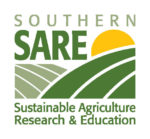 www.sare.org news food-loss-waste-program-event-planner-workshop-coordinator-call-for-applications
www.sare.org news food-loss-waste-program-event-planner-workshop-coordinator-call-for-applications Food Loss & Waste Program Event Planner/Workshop Coordinator Call for Applications
Southern SARE is seeking an event planner workshop coordinator to assist in the planning, coordination, and execution of workshops in ten states.
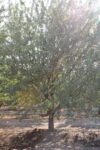 western.sare.org news sustainable-agriculture-action-plans-funded
western.sare.org news sustainable-agriculture-action-plans-funded Sustainable Agriculture Action Plans Funded
Western SARE funded two Sustainable Agriculture Action Plan (SAAP) grants for a total of $50,000. The funding is intended for projects leading a consultative process and creating a Sustainable Agriculture Action Plan that documents the research, regulatory, infrastructure, and educational needs and priorities required to increase sustainable agriculture practices in a specific industry/commodity or geographical […]
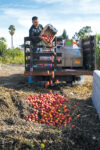 southern.sare.org news sare-seeking-event-planner-to-lead-national-food-loss-and-waster-workshops
southern.sare.org news sare-seeking-event-planner-to-lead-national-food-loss-and-waster-workshops SARE Seeking Event Planner to Lead National Food Loss and Waste Workshops
GRIFFIN, Georgia -- The USDA recognizes the impacts of food loss and food waste on food security and the environment. USDA, in concert with agency partners, is working toward the goal of reducing food loss and food waste by 50 percent by 2030. In the latest effort in reduction activities, Sustainable Agriculture Research and Education […]
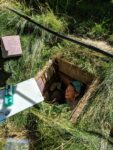 www.sare.org news can-cover-crops-improve-wine-grape-production-resilience
www.sare.org news can-cover-crops-improve-wine-grape-production-resilience Can Cover Crops Improve Wine Grape Production Resilience?
Cover crops may stabilize production systems under varying weather conditions while having a limited impact on yields.
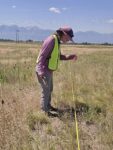 western.sare.org news learning-how-bison-grazing-impacts-rangelands-and-invasive-grasses
western.sare.org news learning-how-bison-grazing-impacts-rangelands-and-invasive-grasses Learning How Bison Grazing Impacts Rangelands and Invasive Grasses
The 19,000-acre Bison Range on the Flathead Indian Reservation is the traditional homeland of the Confederated Salish and Kootenai Tribes. Here, the Salish, Kootenai, and Pend d’Oreilles tribes have focused on land restoration, soil health improvement, and invasive species containment in response to climate change. Invasive annual grasses, particularly Ventenata dubia, pose significant threats to […]
 northeast.sare.org news expanding-aquaculture-by-farming-scallops-alongside-oysters
northeast.sare.org news expanding-aquaculture-by-farming-scallops-alongside-oysters Expanding Aquaculture by Farming Scallops Alongside Oysters
A recent Northeast SARE aquaculture project demonstrated how Maine seafarms can farm multiple crops in the same space by raising scallops in lantern nets arranged below oyster cages. In Northeast SARE Farmer Grant FNE23-052, Growing Bay Scallops on a Maine Oyster Farm as a Strategy to Diversify Crops and Adapt to a Warming Gulf, Winnegance […]
 www.sare.org news new-video-building-customer-relationships-at-brandon-family-farm
www.sare.org news new-video-building-customer-relationships-at-brandon-family-farm New Video: Building Customer Relationships at Brandon Family Farm
When it comes to growing sales, building relationships matters as much as what you grow.
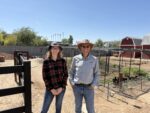 western.sare.org news training-for-the-future-of-arizonas-small-scale-agriculture
western.sare.org news training-for-the-future-of-arizonas-small-scale-agriculture Training for the Future of Arizona’s Small-Scale Agriculture
When supply chains collapsed and grocery shelves sat empty in the first years of the COVID pandemic, many people got interested in growing their own food. Most of those didn’t have access to dozens or hundreds of acres of land. What land they could find were small urban plots, or suburban backyards, or maybe a […]
 western.sare.org news creating-fungal-compost
western.sare.org news creating-fungal-compost Creating Fungal Compost
A former Chicago science teacher turned Colorado farmer, Rick Bieterman isn’t afraid of a challenge. Start with the location of his Watershed Ranch near Buena Vista in central Colorado. “Soil quality out here is pretty terrible,” he said. “Organics are way low. We’re right next to the Arkansas River, so most of our fields are […]
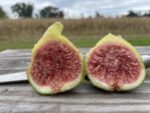 northeast.sare.org news exploring-the-potential-for-fig-production-in-the-northeast
northeast.sare.org news exploring-the-potential-for-fig-production-in-the-northeast Exploring the Potential for Fig Production in the Northeast
The vast majority of domestic fig production in the United States is concentrated in California, because the cost of overwintering fig trees in colder climates is a barrier to the expansion of commercial production. But on one farm in Yardley, Penn., Craig Boyer is exploring a new method of overwintering figs with the aim of […]